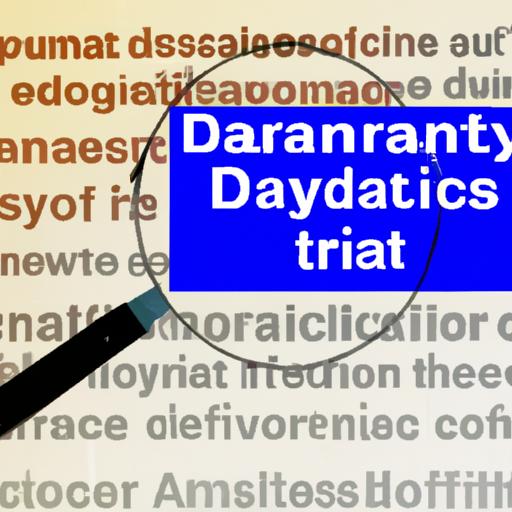
Introduction
In the vast landscape of research and academia, qualitative data analysis software stands as a beacon of guidance, assisting scholars and students in unraveling the complexities of qualitative data. These innovative tools serve as virtual companions, aiding in the interpretation and understanding of intricate data sets. But what sets apart the good from the great in this realm is the accessibility to free qualitative data analysis software.
The importance of utilizing free software for qualitative data analysis cannot be overstated. It not only provides a cost-effective solution for budding researchers but also democratizes access to essential tools that enhance the quality of analysis. As we delve deeper into the realm of qualitative data analysis software, let us explore the myriad benefits and possibilities that await those who dare to embark on this analytical journey.
What is Qualitative Data Analysis Software?
Definition of Qualitative Data Analysis Software
Qualitative data analysis software is a specialized tool designed to assist researchers in analyzing non-numerical data, such as text, images, videos, and audio files. These software applications are equipped with advanced functionalities that enable users to organize, code, categorize, and interpret qualitative data efficiently. By leveraging these tools, researchers can uncover patterns, themes, and insights within their data, leading to valuable discoveries and meaningful conclusions.
Features and Functions of Qualitative Data Analysis Software
Qualitative data analysis software offers a wide range of features and functions to support the analytical process. These may include text search and retrieval capabilities, data visualization tools, coding and annotation functionalities, as well as collaboration and sharing options. Additionally, some software platforms provide advanced analysis techniques, such as sentiment analysis, network analysis, and content analysis. By harnessing the power of these features, researchers can streamline their data analysis workflow and enhance the rigor and reliability of their research findings.
Benefits of Using Free Qualitative Data Analysis Software
Cost-effective Solution for Researchers and Students
When embarking on a research journey, cost can often be a significant hurdle to overcome. Free qualitative data analysis software serves as a beacon of hope for researchers and students alike, offering a cost-effective solution that eliminates the financial barriers to entry. By providing access to powerful analytical tools without the burden of hefty subscription fees, free software empowers individuals to delve into the realm of qualitative data analysis without breaking the bank.
Accessibility to Essential Tools for Qualitative Data Analysis
In the realm of qualitative data analysis, having access to essential tools is paramount to the success of any research endeavor. Free qualitative data analysis software levels the playing field by granting users access to a plethora of tools that aid in data interpretation, coding, and visualization. From thematic analysis to content analysis, these tools offer a comprehensive suite of functionalities that streamline the analytical process and enhance the quality of research outcomes.
Comparison of Free Software Options Available in the Market
With a myriad of free software options available in the market, navigating the landscape of qualitative data analysis tools can be a daunting task. Conducting a thorough comparison of these options is essential to identify the software that best aligns with your research needs. From user-friendly interfaces to specialized analytical features, each software option has its unique strengths and limitations. By evaluating these factors, researchers and students can make informed decisions when selecting the ideal free qualitative data analysis software for their projects.
Top Free Qualitative Data Analysis Software
Overview of Popular Free Software Options
When it comes to free qualitative data analysis software, there is a myriad of options available to cater to varying research needs. One of the prominent choices is “QDA Miner Lite,” a user-friendly tool that offers features such as coding, annotation, and visualization capabilities. Another popular option is “RQDA,” an open-source software that integrates seamlessly with R programming for robust analysis. Additionally, “TAMS Analyzer” stands out for its simplicity and efficiency in handling qualitative data.
Comparison of Key Features and Functionalities
Each free qualitative data analysis software comes with its unique set of features and functionalities that cater to different aspects of qualitative analysis. While “QDA Miner Lite” excels in its intuitive interface and diverse coding options, “RQDA” stands out for its integration with R programming, allowing for advanced statistical analysis. On the other hand, “TAMS Analyzer” offers a streamlined approach to qualitative coding and annotation, making it ideal for beginners in the field.
User Reviews and Ratings for Each Software
User feedback plays a crucial role in assessing the usability and effectiveness of free qualitative data analysis software. By delving into user reviews and ratings, researchers can gain valuable insights into the strengths and limitations of each software. Whether it’s the ease of use, data visualization capabilities, or technical support, user reviews provide a holistic perspective on the performance of these tools in real-world research scenarios.
How to Choose the Best Free Qualitative Data Analysis Software
Factors to Consider When Selecting a Free Software Option
When navigating the sea of free qualitative data analysis software, it is crucial to consider several key factors to ensure you find the best fit for your research endeavors. One vital aspect to ponder is the user-friendliness of the software. Is the interface intuitive and easy to navigate? A software that is user-friendly can significantly enhance your analytical process by saving time and reducing the learning curve.
Another factor to contemplate is the range of features offered by the software. Does it provide the necessary tools for your specific research needs? Consider aspects such as data visualization capabilities, coding assistance, and compatibility with various data formats. Selecting software that aligns with your research requirements can streamline your analysis and elevate the quality of your findings.
Tips for Evaluating the Suitability of Software for Your Research Needs
To ensure the software you choose is truly a companion on your research journey, it is essential to evaluate its suitability for your unique research needs. One effective tip is to test the software with a sample dataset relevant to your research topic. By experimenting with the software using real data, you can gauge its effectiveness in handling and analyzing the type of information you work with.
Additionally, seeking feedback from peers or online communities can provide valuable insights into the software’s performance and user experience. Reviews and recommendations from fellow researchers can offer perspectives that may not be apparent from a simple feature list. By considering these tips and factors, you can confidently select the best free qualitative data analysis software that empowers your research endeavors.
Conclusion
As we conclude our exploration into the realm of free qualitative data analysis software, it becomes evident that these tools are not merely digital assistants but gateways to unlocking the true potential of qualitative research. The benefits of utilizing free software in qualitative data analysis extend beyond financial savings; they empower researchers and students alike to delve deeper into their data, uncovering insights that may have remained hidden otherwise.
In a world where data reigns supreme, leveraging free qualitative data analysis software is not just a choice but a necessity. By embracing these tools, we not only enhance the quality of our research but also foster a culture of inclusivity and accessibility in academia. So, the next time you embark on a qualitative research journey, remember the power that lies within these free software options, waiting to be harnessed for your analytical endeavors.

